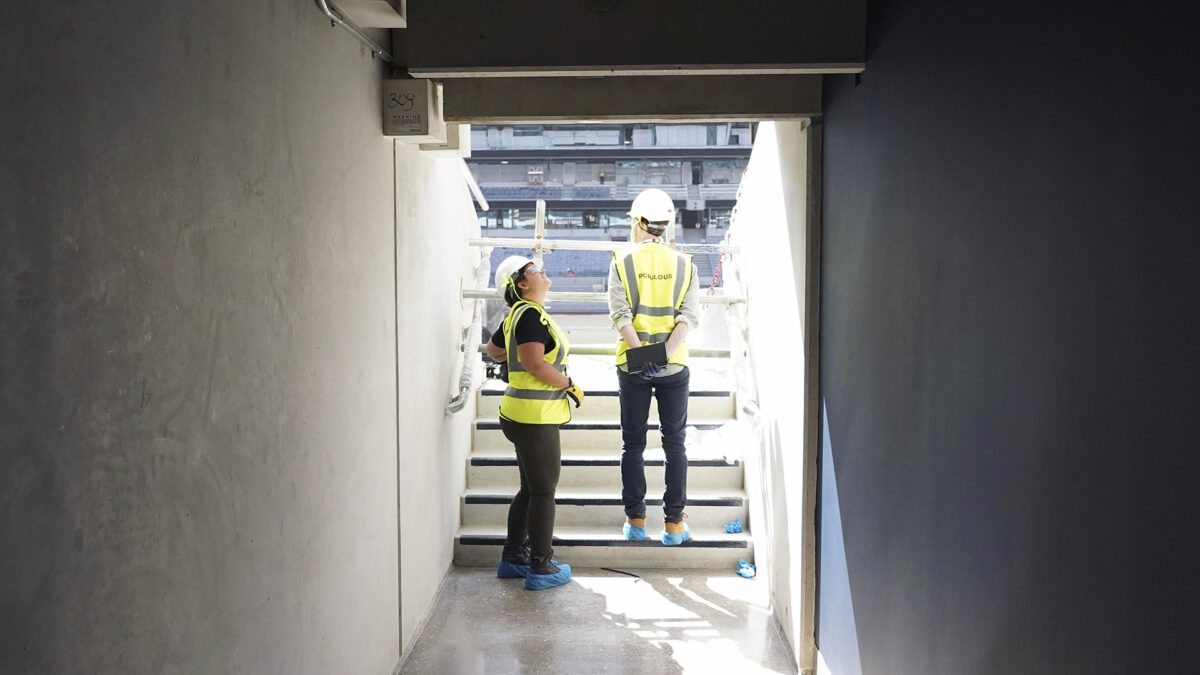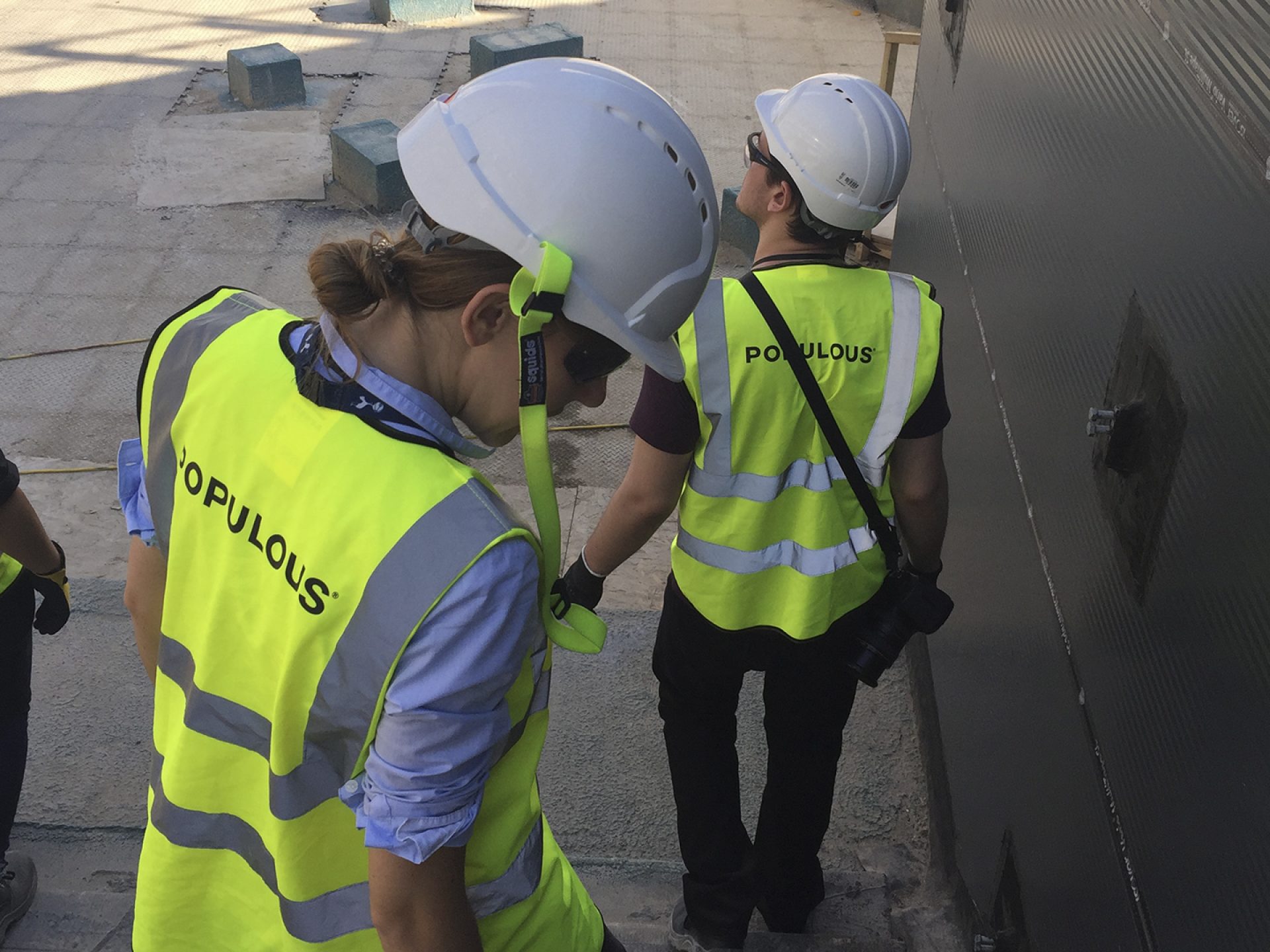Perspectives

June 27, 2019
June 19, 2019

Bianca has earned a reputation at Populous for getting stadiums built. She joined the practice in 2014 after completing a Bachelors and Master’s Degree in Architecture at the Vienna University of Technology, and subsequently spending several years working on residential projects for an Austrian architecture firm. To say she experienced a baptism of fire in sports architecture would be an understatement.
Bianca joined the on-site team working on the post-Games transformation of London Olympic Stadium. She was responsible for the community track club and ticket office, looking after structural coordination, external works and cladding.
Following the completion of this project, Bianca returned to the office for a brief period to work on the development of a 40-000-seat football stadium, before once again donning her PPE and returning to site to supervise the construction of the new Tottenham Hotspur Stadium. Here she shares her experiences of the project.
Tell us about your role on the Tottenham Hotspur Stadium project…
“I was on-site making sure it all came together correctly. Once our great design team had actually finished the design and we went into the construction phase, this was the point I came on board. I was the package lead for concrete, steel, GA entrances, interface detailing — all the stuff that fans might not even notice when they visit the stadium but these are all vital parts of the building. I was out on site on a daily basis; I don’t think many of my colleagues saw me without PPE on during that time!”
What did you enjoy most about the project?
“It was definitely being on-site, in the thick of it, and seeing it all come together step by step. I’ve got so many stand-out memories, like the steelwork going up in the South Stand and the big trusses from the old stadium being pulled down. But the most special moment for me was watching the fans coming into the stadium for the first time and seeing how excited they were, just like children on Christmas day. You could see that for them it felt like coming home.”
What were the most challenging aspects of the project for you?
“When I joined the project it had already broken ground, so the biggest challenge for me was getting my head around such a massive and complex build while at the same time making sure the design was being followed correctly. There were many firsts on this job; lots of times as a team we just had to stick our heads together and work through the challenges. No matter what the problem, we’d always find a solution — we’d always get there in the end.”
What makes Tottenham Hotspur Stadium special?
“It’s definitely the sense that it already feels like home for the fans, which isn’t always the case when a club moves into a new stadium. Also, the atmosphere in the bowl is incredible. With all the work we did designing the acoustics, and the huge South Stand, the noise generated by the crowd is immense. Even with over 60,000 spectators in the bowl, they’re all so close to the pitch that it still feels really intimate. That’s an incredible achievement. Seeing the stadium open and witnessing the choreography of the fans, everyone singing, it gives me goosebumps. The atmosphere is electric.”
"What fans don’t see is all the detail behind the design..."
What’s your favourite space in the building?
“I have quite a few and because of my role on-site I’ve been to spaces not everyone is able to go to, but if I had to pick one that’s accessible for everyone, I’d say somewhere in the South East corner on level 2 or 3 overlooking the podium. From there you can watch it get busier and busier before a game as more fans arrive.”
If you could highlight a unique aspect to the design that fans may not have noticed, what would it be?
“I would go for the cladding around the South entrances, especially in the South West, where we managed to get the bottom of the frame to actually follow the line of the paving. This meant that on the inside we were able to use the frame to create a space for people to sit down in. What fans don’t see is all the detail behind the design for this; it was quite an effort as a team, but we were able to take an element that was required structurally and give it a secondary purpose as something fans can enjoy.”
Lorem ipsum dolor sit amet consectetur, adipisicing elit. Non facere corporis et expedita sit nam amet aut necessitatibus at dolore enim quis impedit eius libero, harum tempore laboriosam dolor cumque.
Lorem, ipsum dolor sit amet consectetur adipisicing elit. Illo temporibus vero veritatis eveniet, placeat dolorem sunt at provident tenetur omnis, dicta exercitationem. Expedita quod aspernatur molestias eum? Totam, incidunt quos.